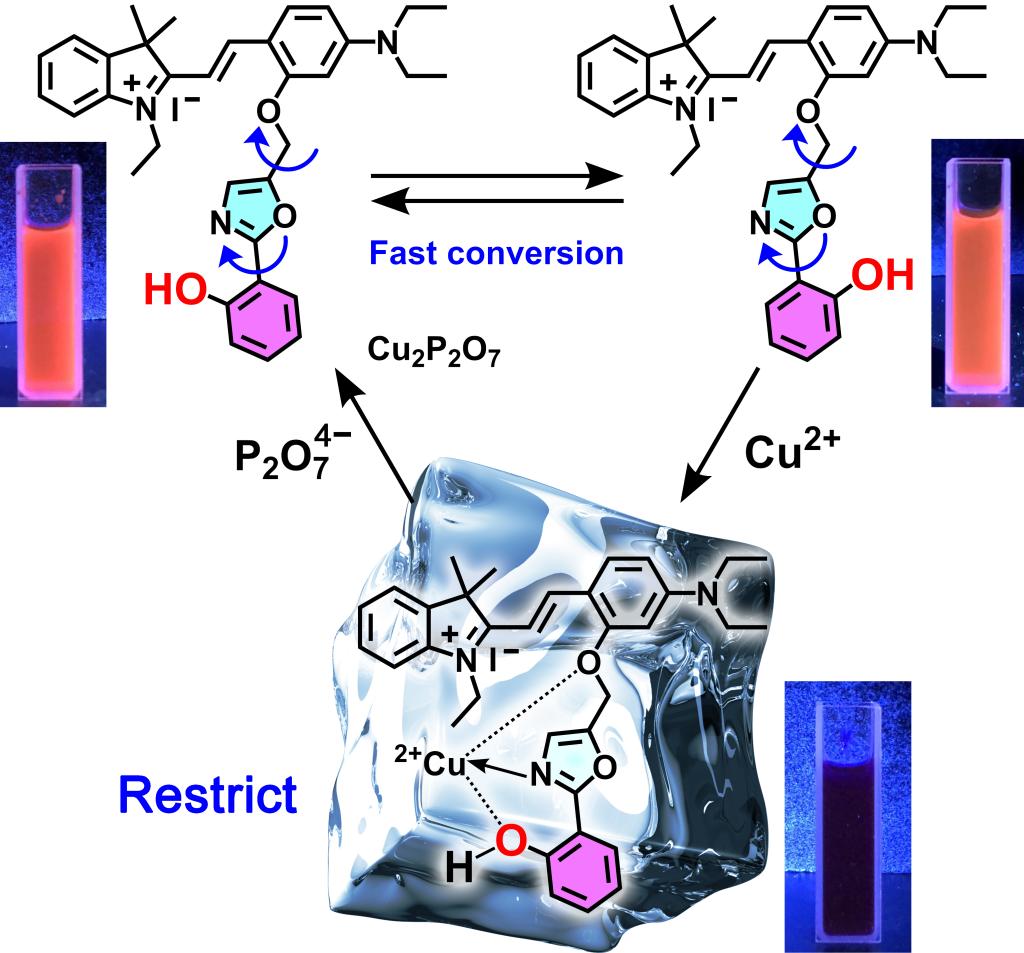Visible and Reversible Restrict of Molecular Configuration by Copper Ion and Pyrophosphate
Time:2020-07-12 09:47 Author:Yongxin Chang
Yongxin Chang, Haijuan Qin, Xue Wang, Xiaopei Li, Minmin Li, Hang Yang, Kuoxi Xu,* and Guangyan Qing*
ACS Sensors 2020, 5, 2438.
DOI: 10.1021/acssensors. 0c00619
Molecular configuration strongly impacts on its functions, however, due to complicated and diverse configuration as well as easy and rapid conversion among various configurations, research of molecular configuration is extremely difficult. If the free rotation of a molecule could be “slowed down” or even “frozen” by an external stimulus, such as ultra-low temperature, one configuration of the molecule could be captured and characterized relatively easily. Here we show that the rotation of a hemicyanine‒labelled 2-(2’-hydroxyphenyl)-4-methyloxazole (H-HPMO) molecule could be specifically and reversibly restricted by sequential additions of copper ion (Cu2+) and pyrophosphate (P2O74–), reflecting as remarkable fluorescence quenching and recovery, which could be directly observed by naked eyes. Binding affinity tests and cryogenic 1H NMR indicate that Cu2+ forms intensive coordinate bonds with phenolic hydroxyl, oxazole, and methoxyl groups of HPMO, which strongly restricts the free rotations of these groups and blocks charge transfer. This study provides a precise, rapid, visible, reversible and low-cost method to monitor the molecular configuration, indicating the broad application prospects of near-infrared fluorescent sensors in configuration analysis, biosensing, drug–substrate complexation.
